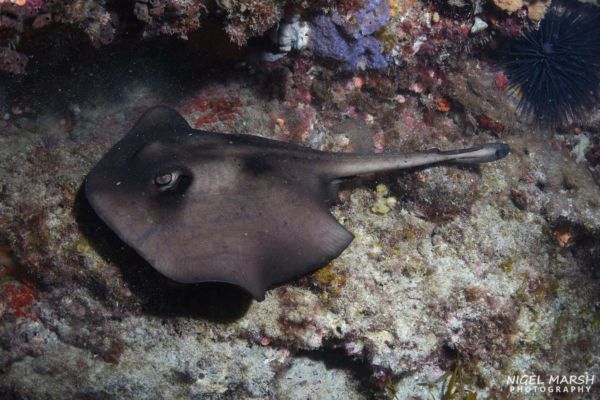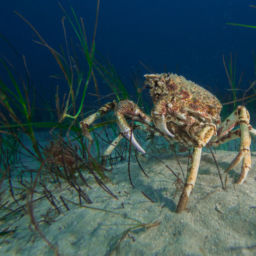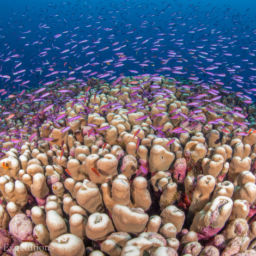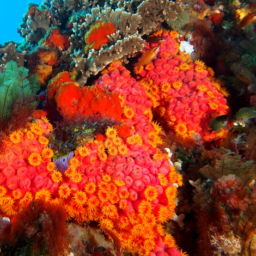Ningaloo Reef and its annual whale shark migration may be the most famous dive destination in Western Australia, but diving Rottnest Island is not to be missed. Most visitors come to Rottnest to see quokkas — one of the cutest marsupials found in Australia — but divers should consider a visit to this picturesque island off Perth to spot a special wobbegong shark.
Where is Rottnest Island?
Located 11 miles (18 km) off the coast of Perth, the capital of Western Australia, Rottnest Island is a low-lying, sandy island on a foundation of limestone. This limestone continues underwater, forming countless caves, cavities and ledges that have created some of Australia’s most fascinating dive sites.
Positioned in a temperate zone but washed by the warm waters of the tropical south-flowing Leeuwin Current, the rocky reefs around Rottnest Island abound with a fascinating mixture of temperate and subtropical species, with many of the species unique to Western Australia, including several wobbegong sharks.
Searching for wobbegongs

Wanting to see some of these unique species, especially the wobbies, I recently headed to Perth and booked a weekend of diving with Lionfish Charters, which operates out of Freemantle. Owned and operated by Andrew McGuckin, Lionfish Charters runs the superb 80-foot (24 m) long vessel Lionfish IV, set up for 40 divers.
The crossing to Rottnest Island took just over an hour, and for our first dive we headed to the northwest end of the island to explore The Slot. Diving in March, which is generally the best time of year, the weather was almost perfect with no wind, except for a 6-foot (2 m) ground swell from an unseasonal storm several days before. Andrew informed us that this would make for a lot of surge, but we should be alright in The Slot.
We jumped in and Andrew was right — it was very surgy swimming over the kelp-covered bottom. The visibility was also reduced to 30 feet (10 m) by the surge, about as bad as it gets at Rottnest. But the water was quite warm at 74 F (23 C), which is about as warm as it gets in this area as well. Over winter the water temperature drops to 60 F or 16 C. We followed Andrew to a large recess in the reef, then entered The Slot.
Diving the Slot

Hidden under the swaying kelp was a massive cavity, the bottom at 60 feet (18 m) and the ceiling 20 feet (6 m) above. Beams of light shone down impressively from openings in the ceiling as swarms of fish darted about. But before exploring this massive cave, Andrew led me to a side passage to look for one of the residents — a western wobbegong shark.
Western Australia is home to nine of the 12 known wobbegong species, including four species only found in the west. Shining our torches about in this small cave, the first thing Andrew pointed out was crayfish, lots of crayfish. Western crayfish are very common at Rottnest Island and can be taken on scuba, which several of my fellow divers were eagerly doing. But I wasn’t interested in crayfish, so we continued the search for the wobby.
Wobbegong jackpot
Finally, we found the western wobbegong. This species grows to 4.5 feet (1.4 m) long, but this shark was only around 3 feet (1 m) long and was very shy. I only managed several quick photos before it disappeared into a crack. There may be more species of wobbegong in the west, but they are far shyer than their cousins on the east coast of Australia. Fortunately, there was plenty more to see at this fabulous dive site.

We then explored more of The Slot, finding several more side tunnels and numerous cracks to investigate. The colors in this cave were mind-blowing, with a great collection of encrusting sponges, gorgonians, ascidians, bryozoans, and hydroids. The fish life was also impressive, and while there were some familiar fish faces, many of the species are unique to the west, such as the western dhufish, red-lip morwong, western king wrasse, white-barred boxfish, and a massive school of gladius chub. There were also bullseyes, leatherjackets, sweep, southern blue devilfish and a smooth stingray.
Diving Kingston Spit

After lunch we headed to the northeast end of the island to dive Kingston Spit. This site was only 40 feet (12 m) deep and featured a maze of ledges and caves, and fortunately little surge. We spent over an hour exploring the caves, finding giant cuttlefish, harlequin fish, blue devilfish, crayfish, nudibranchs and schools of bullseyes and old wives. This is usually a good spot to see gray nurse sharks (known in American as sand tiger sharks), but none were in residence today. The only elasmobranch we could find was a striped stingaree, another species unique to this part of the world.
Searching for gray nurse sharks

The next day the swell dropped, and we headed to the southwest corner of Rottnest Island, hoping to see gray nurse sharks at the Shark Cave. Twenty years ago, I did a lot of research into gray nurse sharks in Australian waters as the species had seen a massive decline in numbers and was listed as critically endangered. They still are, but with protection, their numbers have started to increase. As part of my research, I contacted all the dive operators in Perth to see if there were any known aggregation sites in the area. I was informed that the odd shark was about, but they knew of no aggregation sites. For some reason that all changed about a decade ago, and now there are several sites at Rottnest Island where gray nurse sharks are present year-round.
Shark Cave

Entering the water, it was good to see the visibility had improved, now over 50 feet (15 m). We descended onto a kelp-covered boulder, then dropped down its side to enter another amazing cavity. It was more like a giant swim-through, with a huge slab of rock forming the ceiling. Just like all the other caves I explored at Rottnest Island, it was covered in colorful sponges and swarming with fish, schools of bullseyes and footballer sweep. And swimming among these fish were six gray nurse sharks.
It was incredible to see these graceful sharks parting the fish like a curtain. They were also quite bold, swimming very close to the assembled divers. After watching the sharks for 10 minutes, we moved on to explore more of this rocky reef in depths from 30 to 80 feet (10 to 24 m). We found more ledges and caves to explore and encountered a southern eagle ray lazing on the bottom, plus a great variety of reef fish. We ended the dive back in the Shark Cave, just watching the sharks slowly patrolling their den.

Two days was barely enough time to enjoy the wonders of Rottnest Island, especially when Andrew informed me that they have over 100 dive sites in the area. I think next time I will have to spend a month diving this incredible part of Australia, and hopefully see a few more of the unique wobbegongs and graceful grays.
















